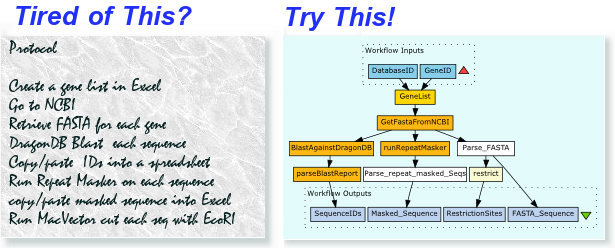API Changes:
1: Storage of xml-lang information in registry is necessary; providers should pay attention to which xml-lang attribute they send to the registry when they register their service/object/etc.
2: not all sub-elements need to be in an object instance. Document the fact that an element that is missing is different from an element that is blank.
3: explicitly say that member articles of an object are allowed to be child types of the registered type. We are now promoting a behaviour for member articles that already existed for the parent objects.
4: support Document style encoding as well as REST as well as the traditional RPC
TO DO’s:
1: Store all incoming registry data as UTF-8 MARK
2: Store the xml-lang of the incoming registry entry, and reproduce it on output from reg. MARK
3: support for async services in jMoby core MARTIN/INB
4: INB is going to propose using endpoint references as part of async (pass references to biiiig data) INB
5: everyone look at how to stream data in Web Services protocol EDDYONE
6: reorganize jMoby CVS so that tests are in a folder off of root. PAUL
7: Mark needs to update CommonSubs object parsing code to allow for missing sub-tags MARK
8: Mark needs to document about missing sub-tags MARK/EDDIE/WENDY
9: Others will look at their parsers to see if they need to be updated EVERYONE
10: Mark needs to update CommonSubs to allow sub-objects to inherit MARK/EDDIE/WENDY
11: Classpath.template should be added to CVS MARTIN
12: Martin is goign to change build process to “ant maven” MARTIN
13: Someone will commit to maven repository (need to get permissions on the existing open-bio maven repository) ALL JAVA DEVELOPERS
14: Java API documentation should either be reduced or shold be split into FULL and CORE – javadoc etc. MARTIN
15: WENDY needs to write an introduction to Moby document that explains what we mean by object, namespace, etc. and the basic behaviour that we are trying to achieve. WENDY
16: Someone (wendy?) needs to take charge of all documentation and FIX IT! Also try to get registry calls in some standard (BNF?) format. Registry API should be all in one document. Use XS3P schema documentation generator. WENDY
17: Martin makes a CPAN release of MoSeS + registry snapshot (one day) EDDIE/MARTIN
18: Mark will explore how feasible it is to register secondary outputs. Will make API change proposal to list. MARK
19: Releases of Moby Perl code should be in CPAN MARK WITH HELP FROM SOMEONE WHO KNOWS
20: Methods for testing services (at various levels) – including sample input/output in the LSID metadata. will become a part of jMoby’s API, and possibly a panel in Dashboard. NEED TO KNOW THE PREDICATE NAMES for this. MARTIN
21: Cleanly split Perl registry from java “stuff”. EDDIE
22: Andreas continues working on registry synchronization… fun fun fun! He will propose to the list, will take advice from community, and decide for himself what he wants to support. ANDREAS
23: Think about the proper way to attribute (e.g. logo’s) and state this in the documentation ANDREAS
24: MobyCentral needs to generate WSDL consistent with Document style encoding MARK/EDDIE
25: Moby Central needs to record the style that a service is provided -> add new fields to the registerService/findService input/output also the LSID metadata -> coordinate this with Feta MARK/EDDIE
26: Moby Central should somehow support registration of REST-style services. We decided that POST must be supported by any REST service. How does this affect WSDL? All REST services must be synchronous (at the moment) MARK/EDDIE
27: Ivan needs to look into support for Async services in REST (someday… manana) INB
28: Authentication -> how should we do it in the various libraries PAUL (Java)/EDDIE (Perl)
29: Paul will jMoby LSID library/API/implementation to get the metadata from service providers PAUL
30: Can we please make a WSDL/XML Schema file for Moby Central EDDIE

